Musojikiden Eishinryu Iaijutsu Yamauchi Style
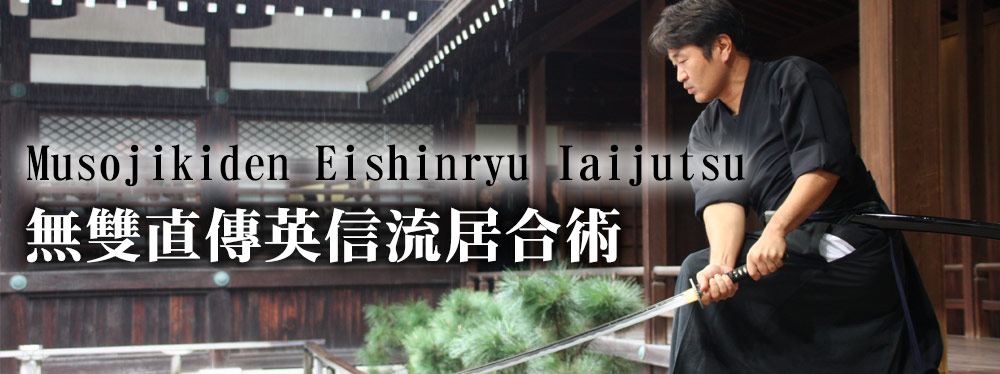
22nd Menkyokaiden Master
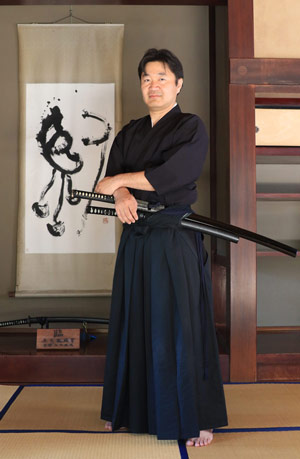 Meishinryu also teaches Muso Jikiden Eishinryu Iai-jutsu Yamauchi Style. The chief instructor, Toshi Asaka, is 22nd Menkyokaiden Master. So, if you are interested in learning the official Iai-jutsu that you will be 23rd master, join Meishinryu and also learn Eishinryu Iai-jutsu. Toshi Asaka has been training Iai-jutsu since 2010 and he also has been training, Shinkageryu Heiho and serveral other Kenjutsu. In Meishinryu, we practice from Shoden, Chuden, Okuden and Extra techniques.
Meishinryu also teaches Muso Jikiden Eishinryu Iai-jutsu Yamauchi Style. The chief instructor, Toshi Asaka, is 22nd Menkyokaiden Master. So, if you are interested in learning the official Iai-jutsu that you will be 23rd master, join Meishinryu and also learn Eishinryu Iai-jutsu. Toshi Asaka has been training Iai-jutsu since 2010 and he also has been training, Shinkageryu Heiho and serveral other Kenjutsu. In Meishinryu, we practice from Shoden, Chuden, Okuden and Extra techniques. We have online Lesson that you can laern from the basic to the advance. If you are interested in please check this out.
Join our membership. I have the official online lesson for iai. I'm officially a certified master of Musojikiden Eishinryu : Menkyokaiden. So, I can give you the official certification, when you finish the training program. https://www.youtube.com/@Mustlovejapan/membership
The Scroll of Menkyokaiden of MJER
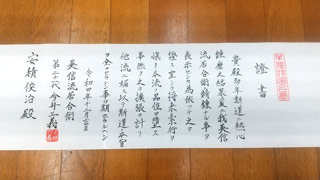
Lineage of Musojikiden Eishinryu Iaijutsu
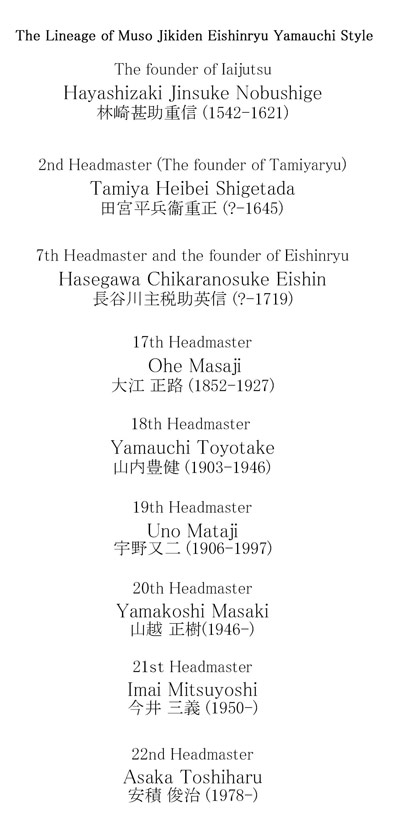 The Founder, Hayashizaki Jinsuke Shigenobu (1546-1621)
The Founder, Hayashizaki Jinsuke Shigenobu (1546-1621)Shigenobu is told to have confined himself for about hundred days in the Hayashizaki Myoji Shrine in Tateoka (Yamagata Prefecture), upon which he recieved the divine inspiration for a new body of sword techniques called Muso-Ken. He is the founder of the following Iai styles: Hayashizaki Shimei Muso-Ryu (a style that includes basic iai techniques using an Odachi {a long sword measuring about one meter}, combined with a Koshigatana measuring 28 to 29cm in length). He also contrived a sword with a long hilt. Shigenobu lived around the end of the Muromachi period (around the years 1558 to 70), but legend says he was the second eldest son of Hojo Yasutoki(1183 to 1242).
Among his many students the following swordsmen are worth mentioing: Katayama Hoki no Kami Fujiwara no Hisayasu (he is told to have confined himself in the Atago Shrine in Kyoto; founder of Hoki-Ryu), Sekiguchi Hachiroemon Jushin ( or Ujimune; founder of Sekiguchi-ryu, the iai forms of Hayashizaki-Ryu, and the Kumiuchi (Jujutsu) techniques of Miura Yojiemon, and Tamiya Heibei Narimasa (founder of Tamiya-ryu, Koda-ryu, Shin Tamiya-ryu and Kishu Tamiya.
Toyotomi Hideyoshi prised Hayashizaki Jinsuke Shigenobu as a swordsman without equal' after having witnessed a performance of his iai techniques.
The Founder of Eishinryu and 7th generation master, Hasegawa Chikaranosuke Hidenobu (Eishin)
His skills reaching perfection, Hidenobu called his own style Muso Jikiden Eishin-Ryu. Furthemore, he served the Tokugawa family in Nagoya holding a fief of a thousand Koku. It is also recorded that besides Kendo, ahe also excelled in Kyudo and the art of horsemanship.
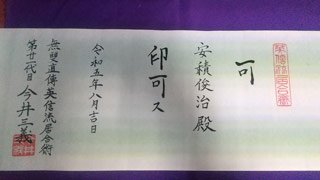
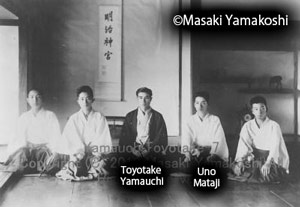 Oe Masaji, the 17th Generation Master
From the late Edo into the Meiji era (late 19th century), Oe Masaji, who had mastered the secrets of both Tanimura-ha and Shimomura-ha as well as other transmissions, became the 17th generation successor. He unified the scattered branches of Eishin-ry? into a single coherent system. Furthermore, he broke with the tradition of keeping Eishin-ryu restricted as an secret tradition (otomery?), instead opening its doors and spreading it throughout Japan. Thanks to Oe, Eishin-ryu became the foundation of modern iaido. He reorganized the tradition into three parts: the Shoden (Seiza no Bu) incorporating the techniques of Omori-ryu, the Chuden (Tatehiza no Bu) from Hasegawa Eishin-ryu, and the Okuden (Okuiai no Bu) from the classic style of Hayashizaki-ryu. For this reason, he is regarded as the restorer of Eishin-ryu. Oe also instructed Yamauchi Toyotake, grandson of Yamauchi Yodo. Though Toyotake was of the former ruling clan, Oe trained him rigorously.
Oe Masaji, the 17th Generation Master
From the late Edo into the Meiji era (late 19th century), Oe Masaji, who had mastered the secrets of both Tanimura-ha and Shimomura-ha as well as other transmissions, became the 17th generation successor. He unified the scattered branches of Eishin-ry? into a single coherent system. Furthermore, he broke with the tradition of keeping Eishin-ryu restricted as an secret tradition (otomery?), instead opening its doors and spreading it throughout Japan. Thanks to Oe, Eishin-ryu became the foundation of modern iaido. He reorganized the tradition into three parts: the Shoden (Seiza no Bu) incorporating the techniques of Omori-ryu, the Chuden (Tatehiza no Bu) from Hasegawa Eishin-ryu, and the Okuden (Okuiai no Bu) from the classic style of Hayashizaki-ryu. For this reason, he is regarded as the restorer of Eishin-ryu. Oe also instructed Yamauchi Toyotake, grandson of Yamauchi Yodo. Though Toyotake was of the former ruling clan, Oe trained him rigorously.
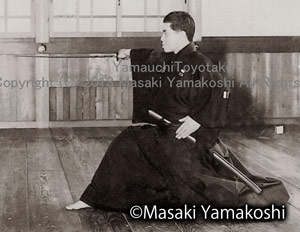 Yamauchi Toyotake, the 18th Generation Master, the first of Yamauchi Style
Former viscount Yamauchi Toyotake was the grandson of Duke Yamauchi Yodo (1827 to 72). Being a family custom at the time, he started training iai from his infancy. In the beginning of the Showa period, he came to Kyoto where he lived for about 10 years. Afterwards he moved to Tokyo. He passed away at the Gif Kawazaki Hospital, infected with typhus which he had caught on an evacuation boat, on January 10th 1946.
Yamauchi Toyotake, the 18th Generation Master, the first of Yamauchi Style
Former viscount Yamauchi Toyotake was the grandson of Duke Yamauchi Yodo (1827 to 72). Being a family custom at the time, he started training iai from his infancy. In the beginning of the Showa period, he came to Kyoto where he lived for about 10 years. Afterwards he moved to Tokyo. He passed away at the Gif Kawazaki Hospital, infected with typhus which he had caught on an evacuation boat, on January 10th 1946. According to Mr. Inoshita, who presently lives in the Kagawa Prefecture, Yamauchi Toyotake was called up to do his military service in 1941 and was assined to the Zentsuji regiment. An inscription drawn with a brush by his in the same year is still preserved in the Hoboji temple, located in Mitoyo Country, Kagawa prefecture.
Yamauchi Toyotake taught iai to quite a number of students during the 10 years he spent in Kyoto, many of whom went to different regions in order to complete their training. There were also some of them who stayed in Kyoto, especially Kitamaru Michitaka, who had recieved Toyotake's instructions without interruption during those 10 years. Accordingly, the genealogy of our style, in so far as Kyoto is concerned, can be depicted as follows.
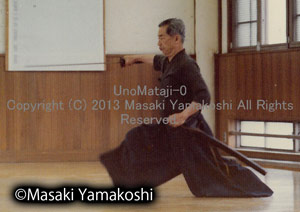 Uno Mataji, the 19th Generation Master
The 19th generation successor, Uno Mataji, was born in Kyoto in 1906. After entering high school in K?chi, he began training in kend? and was introduced to Oe, under whom he started Iai practice. During his training at Oe’s dojo, Uno was further introduced to Yamauchi Toyotake and formally entered his dojo. Though Oe rarely taught his inner secrets to anyone outside Kochi (the old Tosa domain), Uno, being also a disciple of Yamauchi, was taught without reservation. Living a long life to 91, Uno returned to Kyoto and continued teaching iai.
Uno Mataji, the 19th Generation Master
The 19th generation successor, Uno Mataji, was born in Kyoto in 1906. After entering high school in K?chi, he began training in kend? and was introduced to Oe, under whom he started Iai practice. During his training at Oe’s dojo, Uno was further introduced to Yamauchi Toyotake and formally entered his dojo. Though Oe rarely taught his inner secrets to anyone outside Kochi (the old Tosa domain), Uno, being also a disciple of Yamauchi, was taught without reservation. Living a long life to 91, Uno returned to Kyoto and continued teaching iai.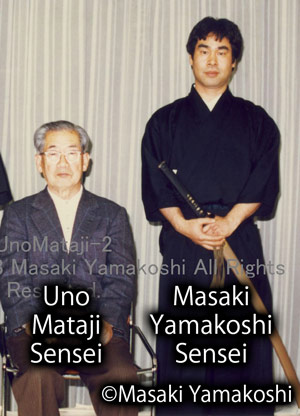 In 1974, Yamakoshi Masaki sensei(20th generation) became a disciple of Uno, receiving the full transmission of the Yamauchi branch of Eishin-ryu. He continues to teach in Kyoto to this day.
In 1974, Yamakoshi Masaki sensei(20th generation) became a disciple of Uno, receiving the full transmission of the Yamauchi branch of Eishin-ryu. He continues to teach in Kyoto to this day.
Imai Mitsuyoshi-sensei first studied under Sato Tomozo (22nd generation), later received the 23rd generation transmission, and then further entered under Yamakoshi Masaki-sensei, from whom he received the 21st generation transmission. Asaka Toshi, a disciple of Imai Mitsuyoshi-sensei, inherited the 22nd generation succession in 2023. Asaka Toshi continues to train under both Yamakoshi Masaki-sensei and Imai Mitsuyoshi-sensei, who are still actively teaching.
In the Yamauchi branch of Muso Jikiden Eishin-ryu, the ancient system of transmission through Densho (written scrolls) is still preserved. We follow a system of complete transmission (kanzen Soden) rather than a s?ke hereditary system. Under this method, once a practitioner masters the necessary techniques, they are granted a transmission scroll and recognized as the next successor, independent and legitimate. Anyone who enters this tradition becomes the 23rd generation successor, a rightful heir of Eishin-ry? and a transmitter of the Iai lineage that traces back to Hayashizaki Jinsuke himself.
Current Sensei of MJER
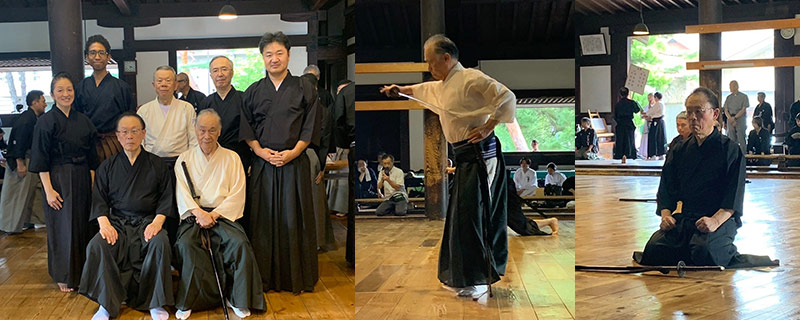
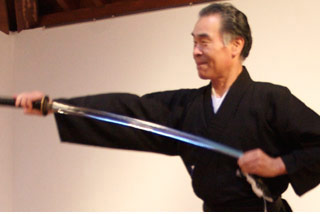 Masaki Yamakoshi Sensei (20th master)
Masaki Yamakoshi Sensei (20th master)Sword Master Masaki Yamakoshi-sensei (山越正樹) is 20th grand master of Muso Jikiden Eishin-ryu Yamauchi Style (無双直伝英信流山内派). He had started “居合道, Iaido” (the sword fighting) when he was 17. Since then, he has over 50 years of experience. Even after the master degree of the sword style, he still pursues the truth of real sword fighting which he had succeeded from his teacher. Because he stays on the right line of traditional sword fighting from this style, his skills and technique are exactly the same as the old traditional sword fighting style. More over, he also teaches and practices to make his sword skill better and more practical.
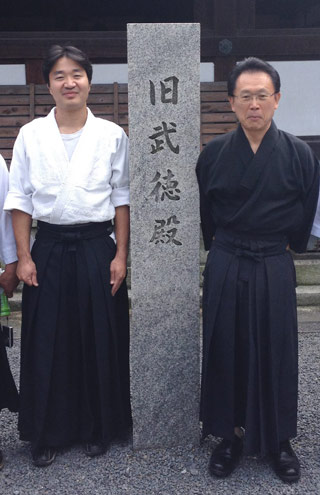 Mitsuyoshi Imai Sensei (21st master)
Mitsuyoshi Imai Sensei (21st master)Imai Sensei has been trained Eishinryu for over 30 years. He visited Kyoto to learn Eishinryu under Yamakoshi sensei and recieved Menkyokaiden. He trained Toshi Asaka for 10 years and gave him the 22nd Menkyokaiden.
The Scroll of Menkyokaiden of MJER
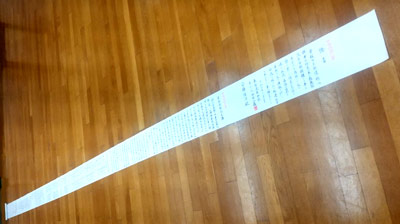
Greeting from Toshi Asaka
The Process of Inheritance
The certifications and Guideline
Shoden : 11 Techniques (1 year)
Chuden : 10 Techniques and Hayanuki (1 year after Shoden)
Okuden Standing : 10 Techniques (1 year after Chuden)
Okuden Sitting : 11 Techniques One Hand Hayanuki (1 year after Okuden Standing)
Mokuroku : Bangai 3 Techniques and Kukanotachi 9 Techniques (3 year after Okuden)
Menkyokaiden : Ogesa Technique (3 year after Mokuroku)
Inka (permission to be independent and to make your certifications) : (2 year after Menkyokaiden)
(Note: the period is approximate years. It depends on the person)
Students must visit Japan to train Kumitachi(Tachiai no Kurai 7 and Tsumeai no Kurai 10) before Mokuroku.
Only person who has own Dojo will recieve Inka.
International Dojo
Kazakustan Dojo
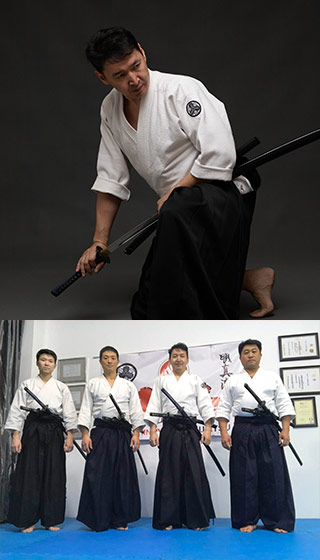 Kazakhstan Brunch opened in 2022 based on Almaty. Right now, they completed Chuden. About 20 people are training Yamauchi Style.
Kazakhstan Brunch opened in 2022 based on Almaty. Right now, they completed Chuden. About 20 people are training Yamauchi Style.To contact Kazakhstan Click here.
The representative of Central Asia Region: Moldabaev Asan
Completed Shoden and Chuden.
Instructors
Moldabaev AsanPak Evgeniy
Nyugay Vitaliy
Kapatay Zharas
Mursaliyev Gadilbek
Yeskaliev Arman
Kaliyev Arman
Jarbassov Nurasyl
Spain Dojo
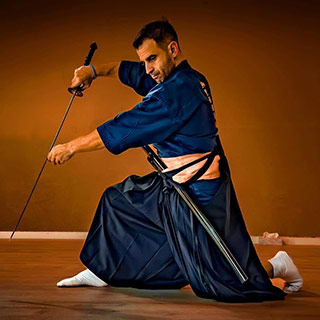 European Representative : Ariel Roberto D' Apice
European Representative : Ariel Roberto D' Apice Born in Argentina but living in Spain, Barcelona, He have been studying the art of the sword for 20 years, I did kendo and iaido.
Located in Barcelona.
Joined Yamauchi style in 2024.
To contact Spain DojoClick here.
Brazil Dojo
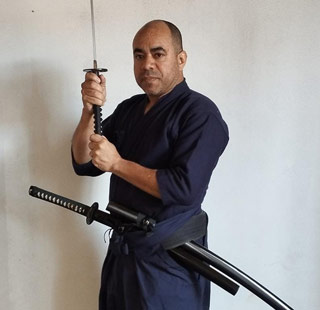 Brazil Representative : Michael Amaral
Brazil Representative : Michael Amaral Michael has been training Daitoryu Aiki-Jujutsu for many years. He was born in Brasilia, Brazil. Michael has over 20 years of experience studying Sword. He also practiced Kendo and Iaido.
To contact Brazil DojoClick here.
List of the Waza of Musojikiden Eishinryu
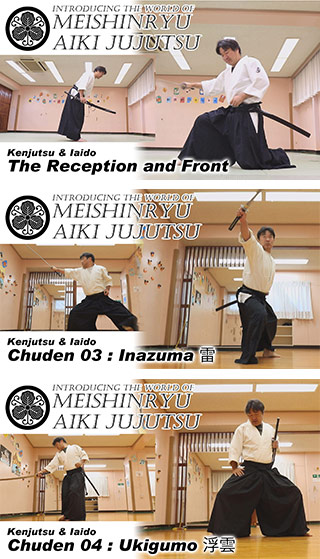 Shoden - 初伝
Shoden - 初伝Mae - 前
Migi - 右
Hidazri - 左
Ushiro - 後
Yaegaki - 八重垣
Ukenagashi - 請流
Kaisyaku - 介錯
Tsukekomi - 附込
Tsukikage - 月影
Oikaze - 追風
Nukiuchi - 抜打
Chuden - 中伝
Yokogumo - 横雲
Toranoissoku - 虎一足
Inazuma - 稲妻
Ukigumo - 浮雲
Oroshi - 山颪
Iwanami - 岩波
Urokogaeshi - 鱗返
Namigaeshi - 波返
Takiotoshi - 瀧落
Makko - 真向
Okuden - 奥伝
Kasumi - 霞
Sunegakoi - 脛囲
Shihogiri - 四方切
Tozume - 戸詰
Towaki - 戸脇
Tanashita - 棚下
Ryouzume - 両詰
Torabashiri - 虎走
Okuden Standing - 奥伝 立業之部
Yukitsure - 行連
Tsuredachi - 連達
Somakuri - 総捲
Sodome - 総留
Shinobu - 信夫
Yukichigai - 行違
Sodetsurigaeshi - 袖摺返
Moniri - 門入
Kabezoe - 壁添
Ukenagashi - 受流
Itomagoi - 暇乞 三本
Bangai - 番外
Hayanami - 速浪
Raiden - 雷電
Jinrai - 迅雷
Kukanotachi - 九箇之太刀
Hasso - 發草
Shinsoku - 神息
Shippu - 疾風
Sangaku - 三覚
Kasya - 花車
Uranami - 浦波
Naminotsutsumi - 波鼓
Ukifune - 浮舟
Jinrai - 迅雷
Dainihon Battoryu Alternatives - 大日本抜刀流改定
Junto Sonoichi - 連刀 一
Tatekito - 多敵刀
Zangekito - 斬突刀
Zenteki Gyakuto - 前敵逆刀
Koteki Gakuto - 後敵逆刀
Koteki Batto - 後敵抜打
Tachiuchi no Kurai (pair training) - 太刀打之位
Deai - 出合
Kobushidori - 拳取
Zetsumyoken - 絶妙剣
Dokumyoken - 独妙剣
Tsubadome - 鍔留
Ukenagashi - 請流
Makko - 真方
Tsumeai no Kurai (pair training) - 詰合之位
Hasso - 八相
Kobushidori - 拳取
Iwanami - 岩浪
Yaegaki - 八重垣
Urokogata - 鱗型
Kurai Yurumi - 位弛
Tsubamegaeshi - 燕返
Gansekiotoshi - 眼関落
Suigetsuto - 水月刀
Kasumiken - 霞剣
Makko - 真向
Hayanuki (Quick Drawing) - 早抜き
Katate Hayanuki (One-handed Quick Drawing) - 片手早抜き
Other Kenjutsu that Toshi Asaka teaches
Kenjutsu based on Shinkageryu - 新影流
Contact Us if you are interested in Joining Meishinryu Aiki Jujutsu
Yokohama main Dojo
We have a classe every once a week at Yokohama. Nitta Chiku Center 2F From 7:00pm to 8:30pm
The location
Please contact us to confirm the date and time before you visit this dojo.
E-mail
Also, please feel free to contact Toshi Asaka for inviting the instructor to your country or location to have a seminar or any international relationship with Meishinryu Aiki-Jujutsu Tenshokai.
Please visit the facebook page, too.
